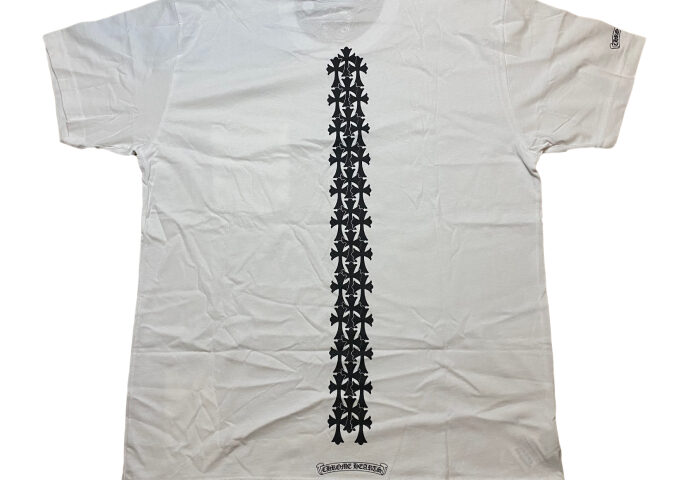Introduction
If you’ve ever been intrigued by avant-garde fashion, then you’ve probably heard of Comme des Garçons. This iconic brand, known for its unconventional designs and groundbreaking concepts, has carved out a unique space in the fashion world. But what makes Comme des Garçons so special? Let’s take a deep dive into the fascinating history of this revolutionary fashion house. https://comme-des-garcons.shop/
The Birth of Comme des Garçons
Comme des Garçons was founded in Tokyo in 1969 by Rei Kawakubo, a visionary designer who has consistently pushed the boundaries of fashion. Kawakubo’s early work was characterized by a stark departure from traditional fashion norms, embracing asymmetry, monochrome palettes, and unconventional silhouettes. Her vision was to create clothing that defied the mainstream, offering something entirely new and thought-provoking.
Rei Kawakubo: The Visionary Behind the Brand
Rei Kawakubo’s journey to becoming a fashion icon is as unconventional as her designs. Born in Tokyo in 1942, she studied fine arts and literature before venturing into the world of fashion. Kawakubo’s unique philosophy revolves around the idea of “anti-fashion,” challenging conventional beauty standards and traditional garment construction. Her designs are often described as wearable art, reflecting her deep commitment to innovation and originality.
The First Collection
In 1975, Kawakubo debuted her first collection in Tokyo. The response was polarizing—while some critics were puzzled by the radical departure from traditional aesthetics, others were captivated by her bold vision. This initial collection laid the groundwork for Comme des Garçons’ future, establishing the brand as a force to be reckoned with in the fashion industry.
Expansion to Paris
The global fashion scene took note when Comme des Garçons made its Paris Fashion Week debut in 1981. The collection, characterized by its deconstructed garments and predominantly black palette, caused an uproar. Critics dubbed it “Hiroshima chic,” referring to its dark, almost apocalyptic aesthetic. Despite—or perhaps because of—this controversy, the brand quickly gained a dedicated following.
Innovative Designs and Concepts
One of the hallmarks of Comme des Garçons is its relentless pursuit of innovation. Kawakubo has continually pushed the envelope with collections that explore themes such as imperfection, abstraction, and the human form. Notable collections include the “Lumps and Bumps” line from Spring/Summer 1997, which featured exaggerated padding and distortions, challenging conventional notions of beauty and form.
Collaborations and Partnerships
Comme des Garçons is also known for its high-profile collaborations. Over the years, the brand has partnered with a variety of companies, from Nike to Louis Vuitton, bringing its avant-garde aesthetic to a broader audience. These collaborations have not only expanded the brand’s reach but also influenced the fashion industry as a whole, blending high fashion with streetwear and luxury.
Comme des Garçons Play
In 2002, Comme des Garçons introduced its Play line, characterized by a more casual, accessible approach. The line is best known for its distinctive heart logo with two eyes, designed by Polish artist Filip Pagowski. Play has become a global favorite, merging the brand’s avant-garde roots with a playful, approachable sensibility.
The Role of Dover Street Market
Dover Street Market, a concept store founded by Rei Kawakubo and her husband Adrian Joffe, has redefined the retail experience. Launched in London in 2004, it combines fashion, art, and culture under one roof, offering a curated selection of Comme des Garçons pieces alongside other innovative brands. This pioneering retail space has since expanded to several major cities, influencing the way fashion is presented and consumed.
Comme des Garçons and the Art World
Art and fashion often intersect at Comme des Garçons. Kawakubo has collaborated with numerous artists and incorporated art into her collections, creating immersive, thought-provoking experiences. These collaborations blur the lines between fashion and art, emphasizing Kawakubo’s belief in the transformative power of design.
Challenges and Controversies
Like any groundbreaking entity, Comme des Garçons has faced its share of challenges and controversies. From accusations of cultural insensitivity to criticisms of its unconventional designs, the brand has weathered numerous storms. However, Kawakubo’s steadfast commitment to her vision has allowed Comme des Garçons to navigate these issues and emerge stronger.
Comme des Garçons Today
Today, Comme des Garçons remains a pillar of innovation in the fashion industry. The brand continues to release collections that challenge and inspire, maintaining its reputation as a leader in avant-garde fashion. Recent collections have explored themes such as duality and transformation, reflecting Kawakubo’s enduring fascination with the unconventional.
Impact on the Fashion Industry
Comme des Garçons’ influence on the fashion industry is profound. Many designers cite Kawakubo as an inspiration, and the brand’s impact can be seen in the work of numerous contemporary fashion houses. By continuously pushing boundaries, Comme des Garçons has contributed to the evolution of fashion, encouraging a more experimental and open-minded approach to design.
Cultural Influence
Beyond the runway, Comme des Garçons has made a significant impact on popular culture. The brand’s distinctive aesthetic has been featured in countless fashion magazines, films, and music videos. Its influence extends beyond clothing, shaping attitudes towards fashion and creativity in the broader cultural landscape.
Conclusion
The story of Comme des Garçons is one of relentless innovation and unwavering vision. From its humble beginnings in Tokyo to its status as a global fashion powerhouse, the brand hasThe Fascinating History of Comme des Garçons defied convention and redefined what fashion can be. As we look to the future, it’s clear that Comme des Garçons will continue to inspire and challenge, leaving an indelible mark on the fashion world.
FAQs
1. What does “Comme des Garçons” mean? “Comme des Garçons” translates to “Like Boys” in French, reflecting the brand’s androgynous and unconventional approach to fashion.
2. Who founded Comme des Garçons? Comme des Garçons was founded by Rei Kawakubo in 1969.
3. What is the Play line by Comme des Garçons? The Play line, introduced in 2002, features more casual and accessible clothing, recognizable by its heart logo with two eyes.
4. What is Dover Street Market? Dover Street Market is a concept store founded by Rei Kawakubo and Adrian Joffe, combining fashion, art, and culture in a unique retail space.
5. How has Comme des Garçons influenced the fashion industry? Comme des Garçons has influenced the fashion industry through its innovative designs, collaborations, and the introduction of avant-garde concepts, inspiring countless designers and shaping contemporary fashion.





